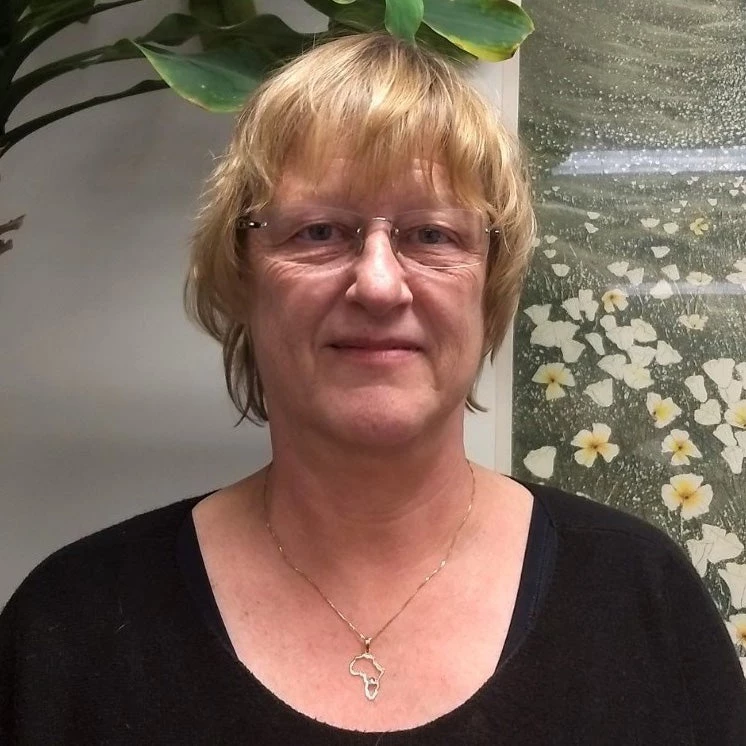 Women horticulture beneficiary of irrigation powered with solar in Senegal. Photo: World Bank
Women horticulture beneficiary of irrigation powered with solar in Senegal. Photo: World Bank
This International Women’s Day, with the theme of “For ALL women and girls: Rights. Equality. Empowerment” we speak to four leading experts, Aifa Fatimata Niane Ndoye, Kadir Osman Gyasi, Patti Kristjanson and Patricia Van de Velde working on women’s empowerment in agriculture.
What is the current state of women in agriculture?
Aifa Fatimata Niane Ndoye: Women produce 60-80% of the food in developing countries and provide much-needed labor for the agricultural sector, making up 70% of the agricultural labor force in Senegal, and 67% in the Gambia. However, women still lag behind in many areas: access to markets, finance, agriculture technologies and their fundamental right to land. In drought-stricken areas like the Sahel, irrigation is a huge lift for women who spend most of their time drawing water from deep wells and hand-irrigating their fields. Women remain trapped in a cycle of poverty as they continue to work very small plots of land with hand-irrigation.
Patricia Van de Velde: The status of women’s equality is stalling. In some places, we see enormous progress but in others, especially in fragile or conflict-affected countries, the situation for rural women has stalled or in some cases worsened. Women still make less than men for the same work. In addition to the gaps mentioned by Aifa, they're less represented in decision-making.
Kadir Osman Gyasi: Women working in agriculture are poorly resourced. Even in cultures where they do have access to land, it is often not enough. In Northern Ghana, there were instances where husbands allocated degraded lands infested by striga, a parasitic weed, to their wives. How do the women respond? By adopting technology, including combining organic and mineral fertilizers and cultivating soybean varieties that can control striga. They reduced the infestation levels - demonstrating their ability to restore Africa’s hugely degraded lands through better cropping practices.
What actions can we take at global, regional and national levels to improve women’s empowerment?
Aifa Fatimata Niane Ndoye: The first crucial piece to empower women in agriculture is women producers' access to quality inputs, and modern technologies and innovations. Second, these hard investments must be combined with soft investments: projects in the Gambia, the Sahel region, and Guinea-Bissau have financed both - building boreholes to have enough water for increased plot sizes and training women to manage and maintain irrigation and solar systems.
 Women processing mangoes in the Gambia. Photo: World Bank
Women processing mangoes in the Gambia. Photo: World Bank
What projects are we seeing on the ground and what is working in terms of women’s empowerment?
Patti Kristjanson, Gender Lead with the Global Environment Facility-funded Food Systems, Land Use and Restoration Impact Program: In many countries and contexts, women lack access to, or have very limited exposure to financial services. In Mexico, FOLUR is working to address this gap. The initiative supports women-led businesses, such as nurseries producing seedlings for agroforestry initiatives. Savings groups have been established, enabling women to reinvest in sustainable production. In addition, women-led coffee brands have been developed to access premium markets, increasing visibility and value for their products. And a co-financed initiative is training financial intermediaries—both public and private—on gender perspectives to ensure that financial products and services meet the needs of women entrepreneurs and farmers.
Patricia Van de Velde: We have a growing body of evidence and examples that we know work. It’s a virtuous circle. When designed with gender equality in mind, interventions in the agrifood sector can contribute to the foundational well-being of women and girls and to their greater economic opportunities.
" In one case in the Gambia, we scaled up model vegetable gardens led by women – they are now so masterful in the production of vegetables, that any man who comes along has to learn from them. Women are standing up and feeling counted where there is recognition of their abilities." – Kadir Osman Gyasi
How do we support women-led agribusinesses and finance, and invest in their future?
Patricia Van de Velde: Recognize them! The first step to support women-led agribusiness is understanding women’s needs and then creating the right space for finance and investment to meet their finance and credit demands. Women are very credit-worthy but don’t believe they are- so there is a lot of work to meet them in this space. In our projects in Eastern Africa, we focus on tailoring specific financial products to women and finding ways for private sector companies to create options to meet the demands of rural women.





Join the Conversation